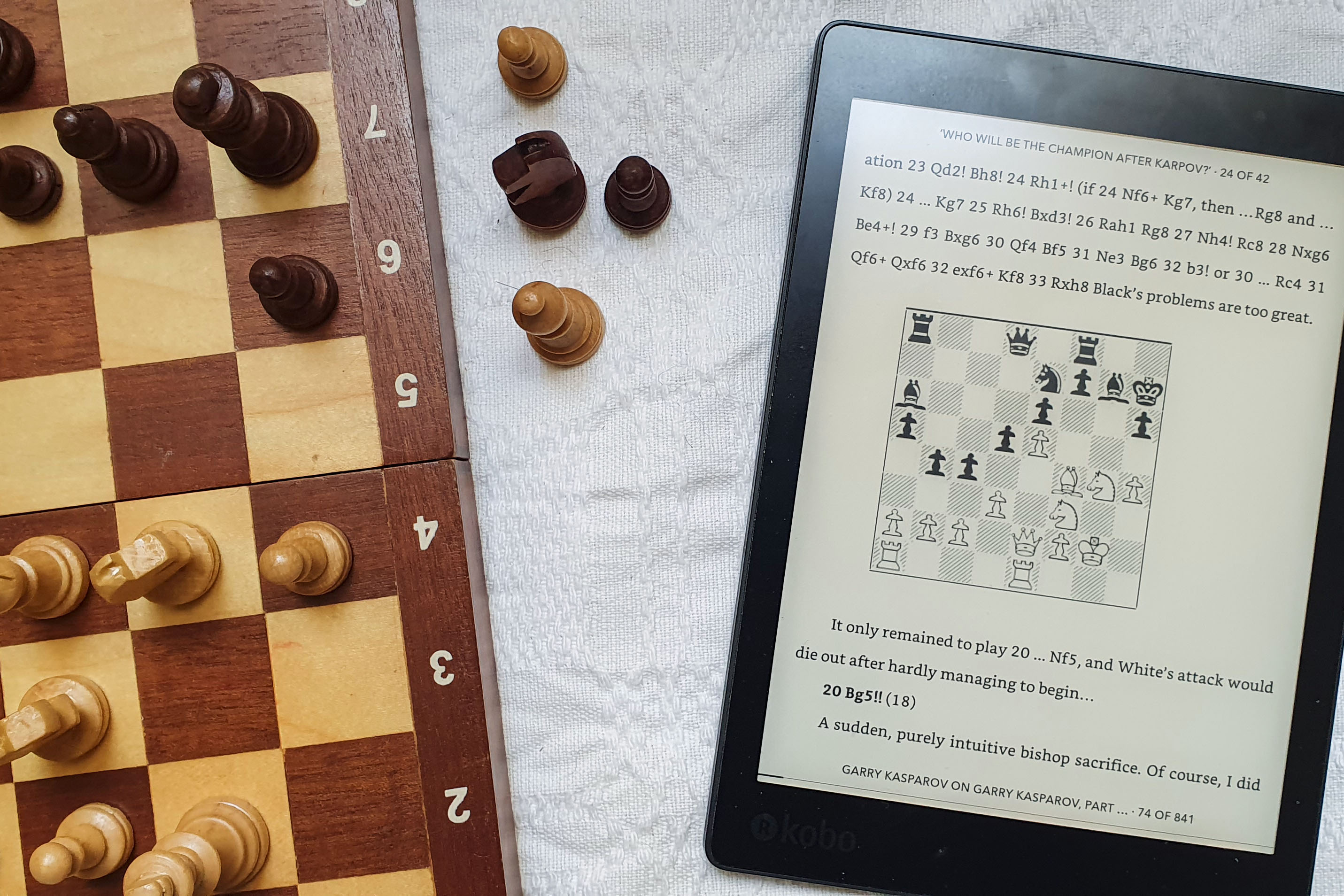


"Plain prose is still the best technology for turning the user’s own mind into a display device"
-- Vernor Vinge
Although I am a noted lover of technology, it would be extremely remiss to suggest I was of a generation who never really embraced classic printed books, as handed down since the days of Gutenberg. As a child I was a fanatical reader and by the time I was a teenager, I even chose my pants and jackets according to the size of their pockets and their ability to transport whatever I might be reading at the time.
Yet despite having devoured thousands of books in the time-honored format, I have made the move to digital wholeheartedly and without reservation. It was not always so, and many of the challenges had to do with the maturity of the technology itself. Amazon really revolutionized this for us with both its release of the first Kindle in 2007, and the massive push to develop a thriving market of ebooks for their device.
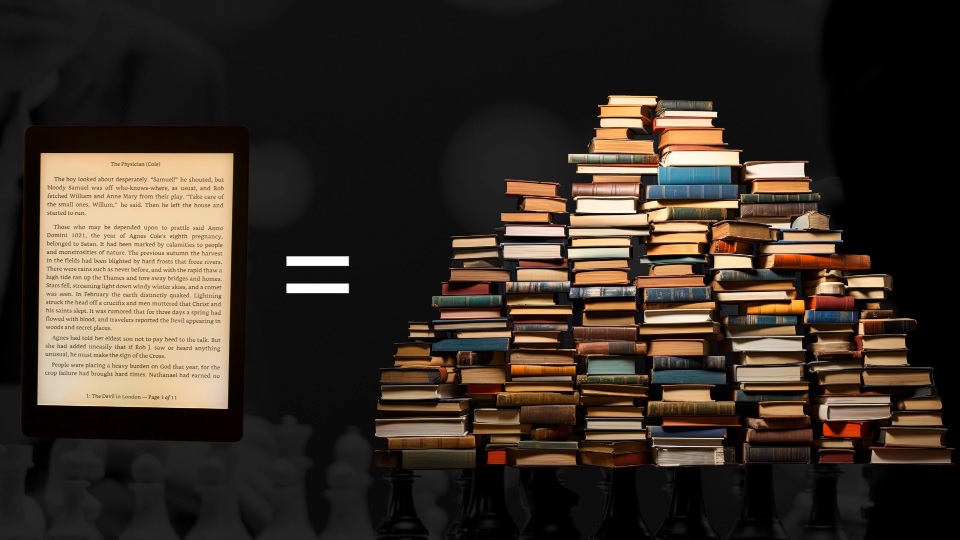
There is no arguing the space gains of an ereader, and while having a nice library with books is pleasing to see, unless you stop reading, space will soon become an issue.
I first began to really read digitally on a tablet, which had a clear reader but shared all the caveats of trying to read books on a phone or tablet, including that signature burning sensation in the eyes. Later I moved to a Kindle Paperwhite (3rd generation). The Kindle Paperwhite was the first to bring internal lighting directly in it, and this was a huge bonus. It meant being able to hole up in low or no light, and be able to read without needing a light source, while simultaneously allowing you to read outside the way only an ereader can.

As you can see, with all lighting off, the sunlight illuminates the ereader like a traditional book and even casts shadows on it.
Still, while I used it profusely, my pleasure was seriously dampened by a couple of gripes that subsequent models have not addressed to this day.
The first is the screen size. At the time, the standard was six inches, which is now 6.8 inches, and even seven inches for the top-of-the-line Oasis, but even that falls short of the ideal and I will explain why. They tout themselves as being of 'paperback size', but this is a half-truth. While the ereader itself may compare favorably to a paperback in overall size, the screen where you actually read will be a good deal smaller.
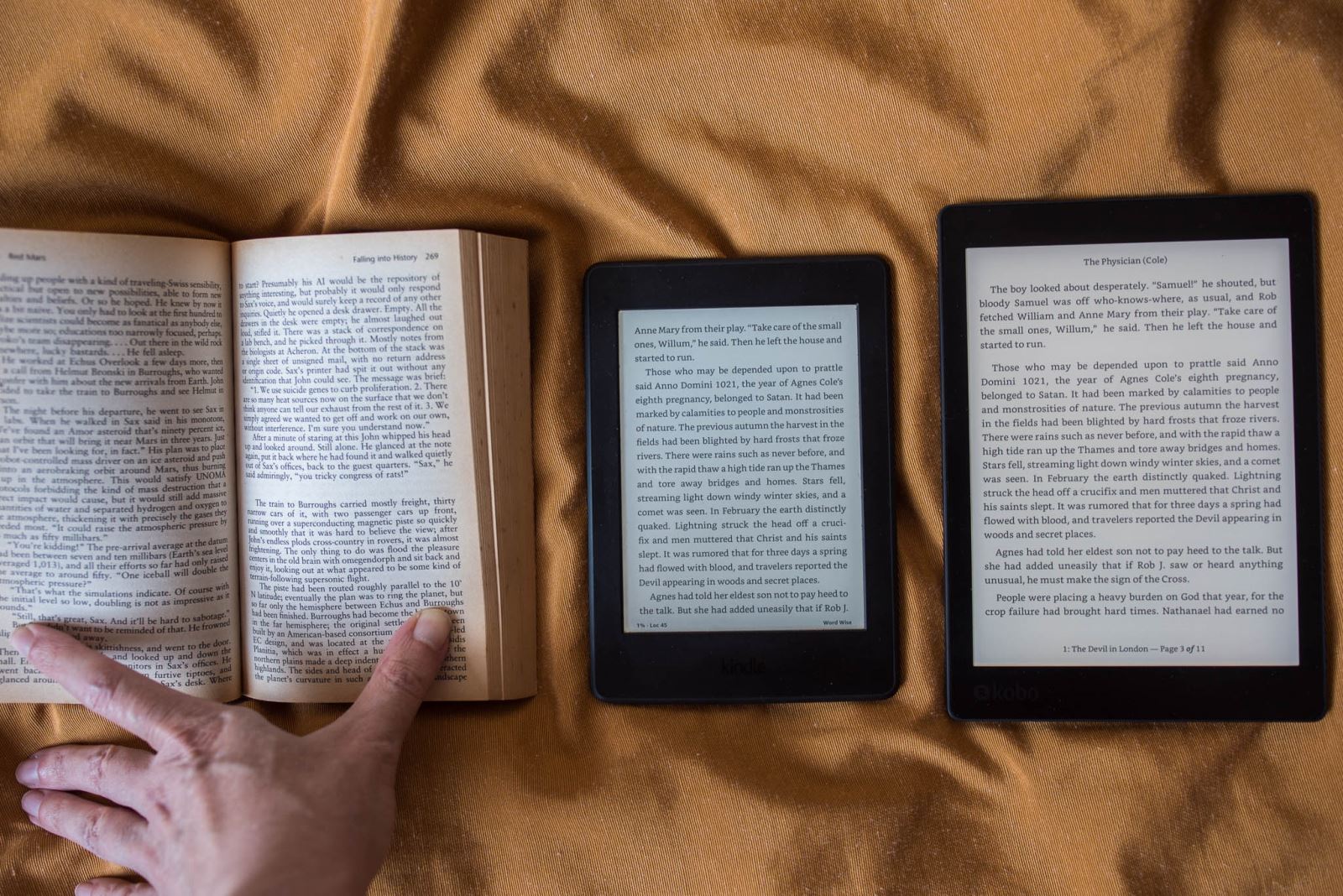
A side-by-side comparison of a normal paperback with a 6-inch Kindle and then the 7.8-inch Kobo. As you can see, the 7.8 inch screen is a close match.
This might not sound like such a big deal, but consider that this also ruins one of the inherent strengths of an ereader: the ability to customize the font and font size.
Books are printed with quite small text, not because some international consortium got together and agreed this was the best reading experience possible, but rather due to plain economics: Larger letters mean a much larger book.
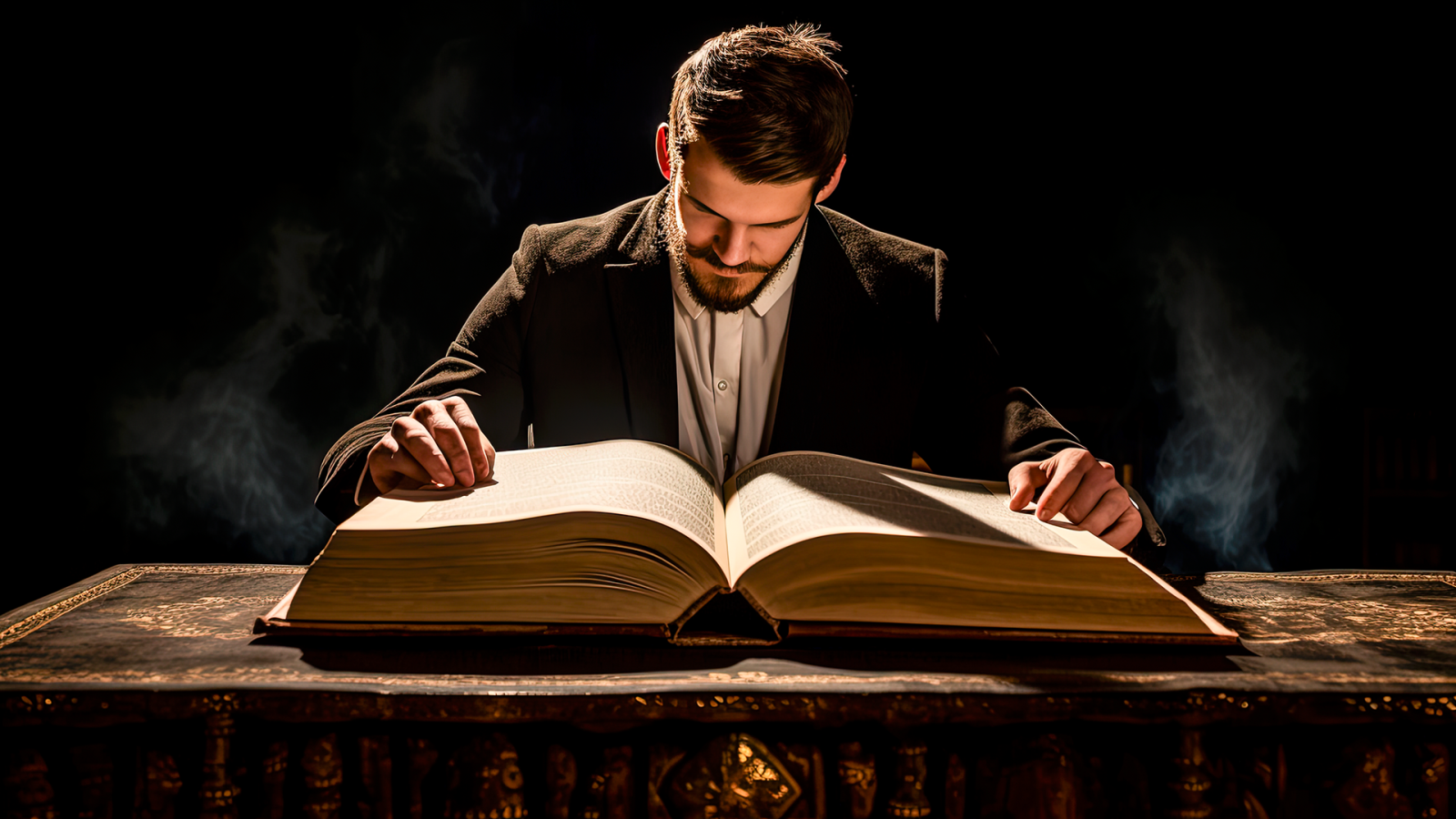
If fonts were set to the most comfortable, then typical books might look like this instead.
On an ereader this is not a factor, so theoretically you could set it to an optimal perfect balance. The problem is that on a reduced screen size, the lines become quite short, and you find yourself turning pages every few seconds. In fact, even if you used the same size as print books, you would still get considerably less text per line and per page compared to a normal book. This meant making compromises that were much less than ideal.
The second complaint I had was the Kindle's incomprehensible system of tracking your reading. Number of pages? Sorry. Pages per chapter? Nope. The only options it gave were percentage of the book read, an estimate of the number of hours left to read until the end, and finally some incredibly bizarre reference called 'loc' or location.

It might seem like a quibble, but if you read a lot, these quality-of-life issues, or lack thereof, soon grate.
Having read all my life, I can confidently state never having used or desired any of these measures. As a rule it was either how many pages overall, and more practically: how many pages left in a chapter. Why? Well, at some point you will be getting ready to end your reading session and will see how many pages are left in the chapter. All readers will sympathize with the words: "I'm just finishing this chapter." This localized page-count will determine whether I read until the end of the chapter, or just wrap it up now if there are too many to go. I found this bizarre and frustrating.
Nevertheless, in time a new rival came up, not inexpensive it is true ($229 at the time), but that addressed each and every one of these complaints. The first and foremost was its 7.8 inch screen. This alone was such a draw that I took the risk and bought it. When it arrived, I was in heaven. While the model I fell in love with is the Kobo Aura One, it has since been superseded by newer large models by the company, the Forma and Scribe per their site.
Finally, I had hit the sweet spot I sought. The screen's actual size matched that of a paperback, it had customizable warm lighting (you'd be amazed at how much of a difference it makes, not only for sleeping, but plain comfort).
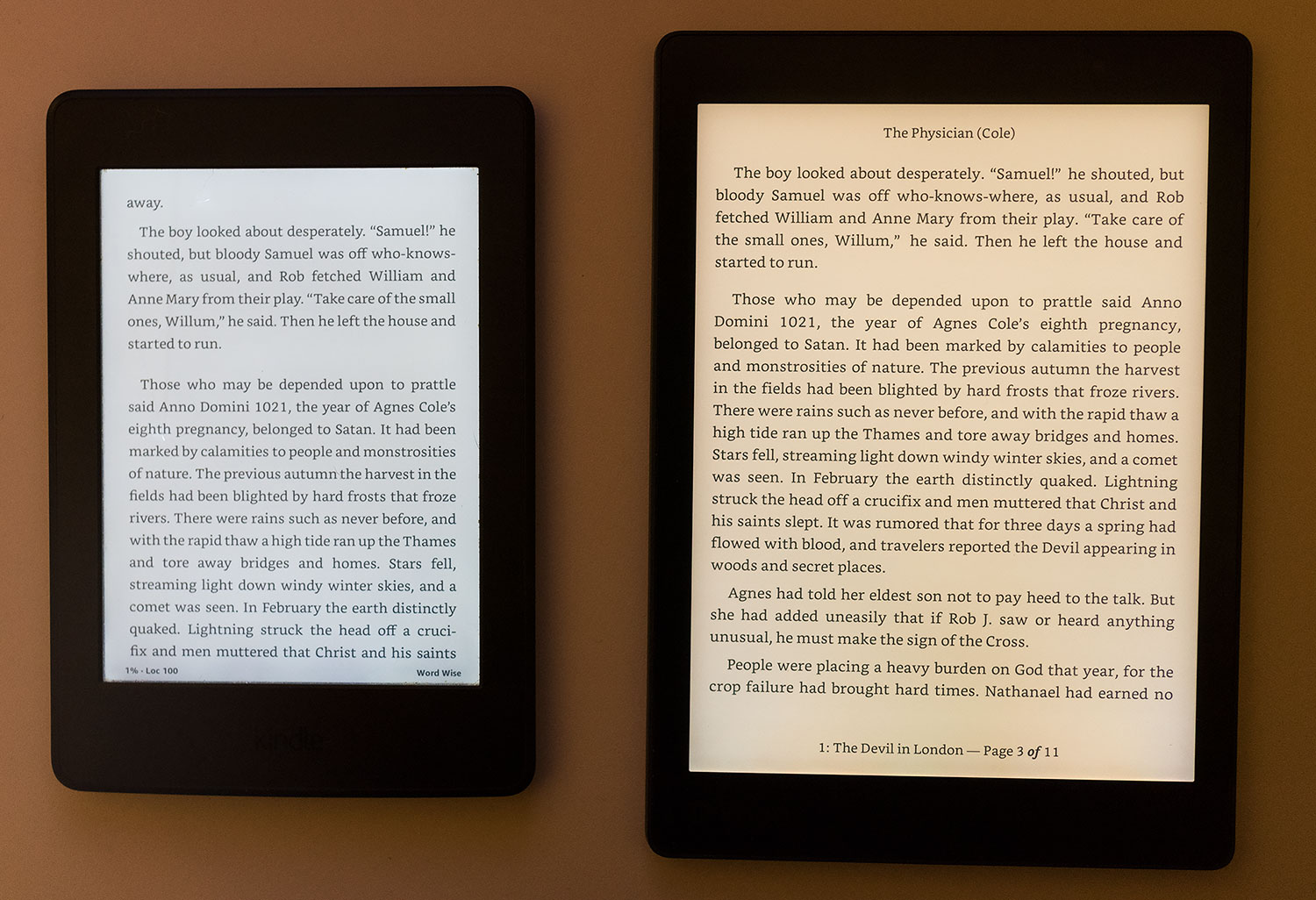
The ability to regulate the temperature of the light (meaning white-blue to yellow-orange) is not only very beneficial to help sleep, but more pleasant to see. The new Kindles have this too I saw. In the dark I set brightness to a mere 2% and it is more than enough, but contrary to a mobile device, there is no retina burn or fatigue. it is like reading a paper book with a bit of light.
It is waterproof enough that reading near a swimming pool or in the bath is a non-factor. I do neither, but it is nice to know I don't need to have palpitations if it gets wet, and of course the way it tracks reading is exactly as it should be.
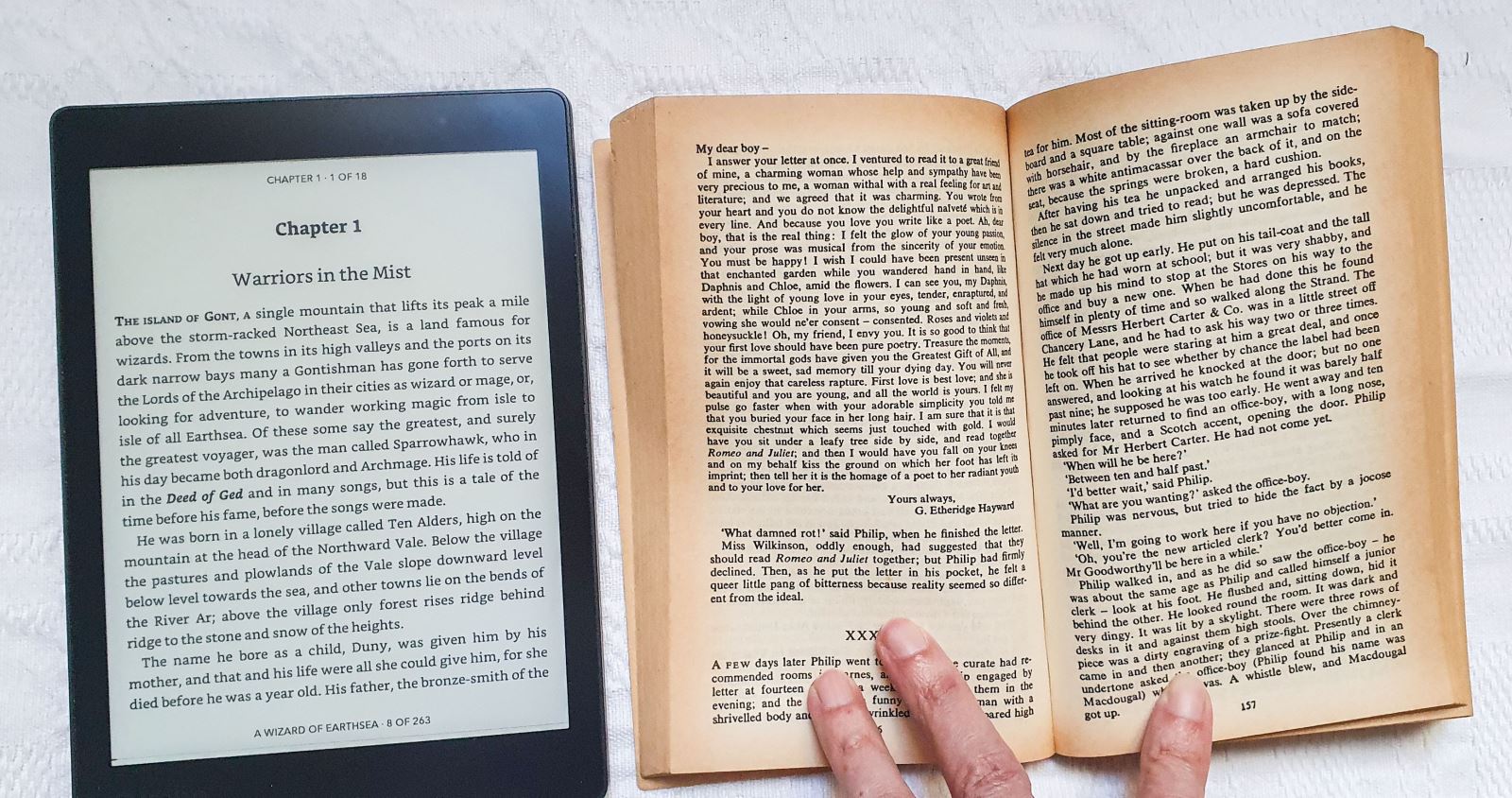
This is my preferred font-size, and as you can see, it is still dense enough to make for a normal reading experience. Notice the page count of the chapter at the top, and the overall page count at the bottom.
I will add another perk true of all ereaders: instant dictionary lookup. I love that I can just tap on a word and instantly get a complete dictionary definition without having to break my reading immersion for more than a few seconds. Since I read in several languages, not all as fluently as English, it means a much smoother experience overall.
Suffice it to say, you can also enjoy chess books on them as well. Be warned that the quality of the formatting can vary from company to company or even edition. Nevertheless, I have bought and read books such as Karsten Muller's Fundamental Chess Endings and Kasparov's trilogy on his career, as well as the masterpieces on Bobby Fischer by John Donaldson. I buy almost all my books through Amazon still, and have a system to convert them to read on my non-Kindle ereader, so know that this is possible.
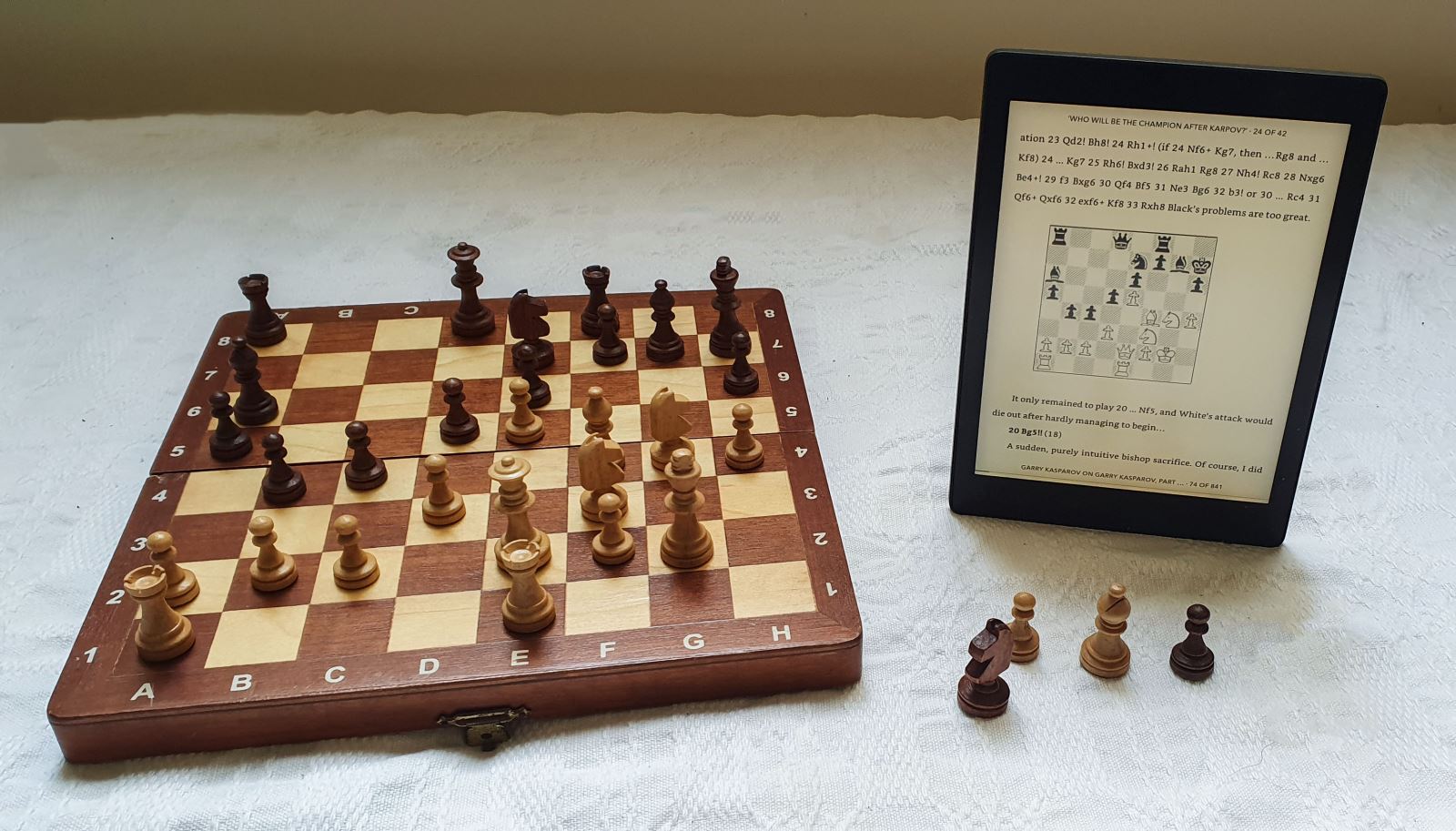
If you love reading and were never quite happy with the experience, this might be the cure to those woes. Assuredly there are aspects of the printed book that are gone, but the many wonderful gains they can offer are a more than worthy tradeoff.
Links